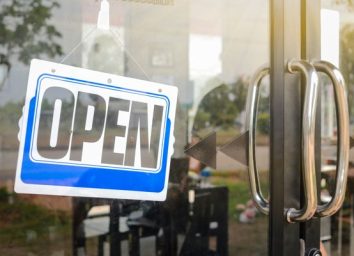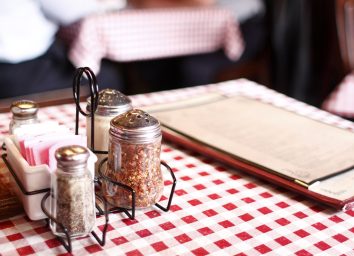7 Things Waiters Are No Longer Allowed to Do
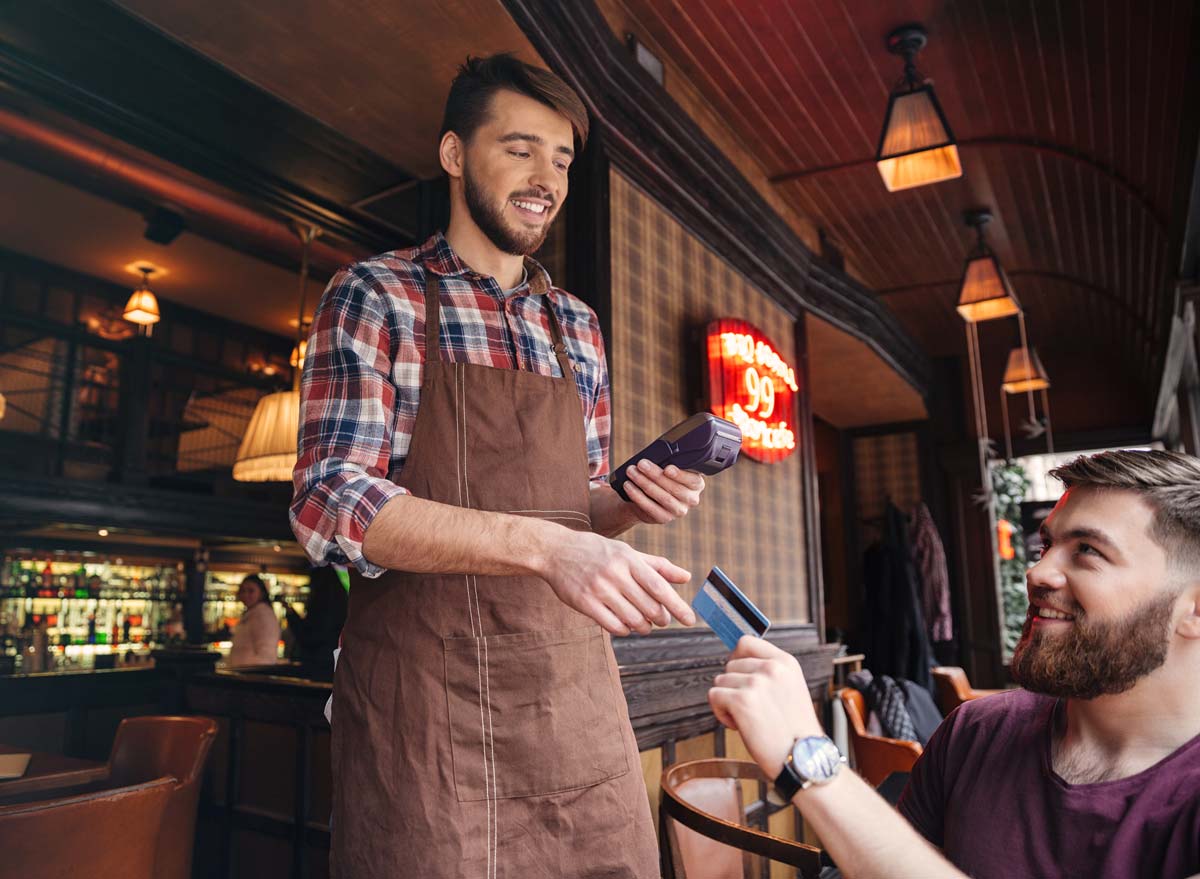
“Your table is ready.” Typically, you hear this line ushered by a hostess at a restaurant; however, once coronavirus stay-at-home orders are lifted, this may come as a text so that you don’t have to wait in a crowded lobby. Little things that we’ve completely overlooked as part of our dining experience are going to change in the blink of an eye—dining out is going to look a lot different moving forward, both for guests and waiters.
As restaurants slowly start to reopen across the U.S., states are issuing their own guidelines and restrictions so that dining rooms can maintain high safety standards and adhere to social distancing recommendations. Tables spaced six feet apart, no condiments on tables, sanitizing surfaces every 30 minutes… there are many surprising things you’ll never see in restaurants again.
By the same token, while your experience as a patron is going to be much different the next time you step foot in a restaurant, so too will the jobs of waiters. After already being out of work for weeks to months, these essential workers are going to have to adapt to dozens of new guidelines as well as ditch some habits that were common practice in your standard dining room. Take a look at these 7 things waiters can no longer do when restaurants open up again after restaurants shut down. And for more on how COVID-19 is impacting the dining world, see how these 7 beloved restaurant chains may not survive.
Clear plates without gloves
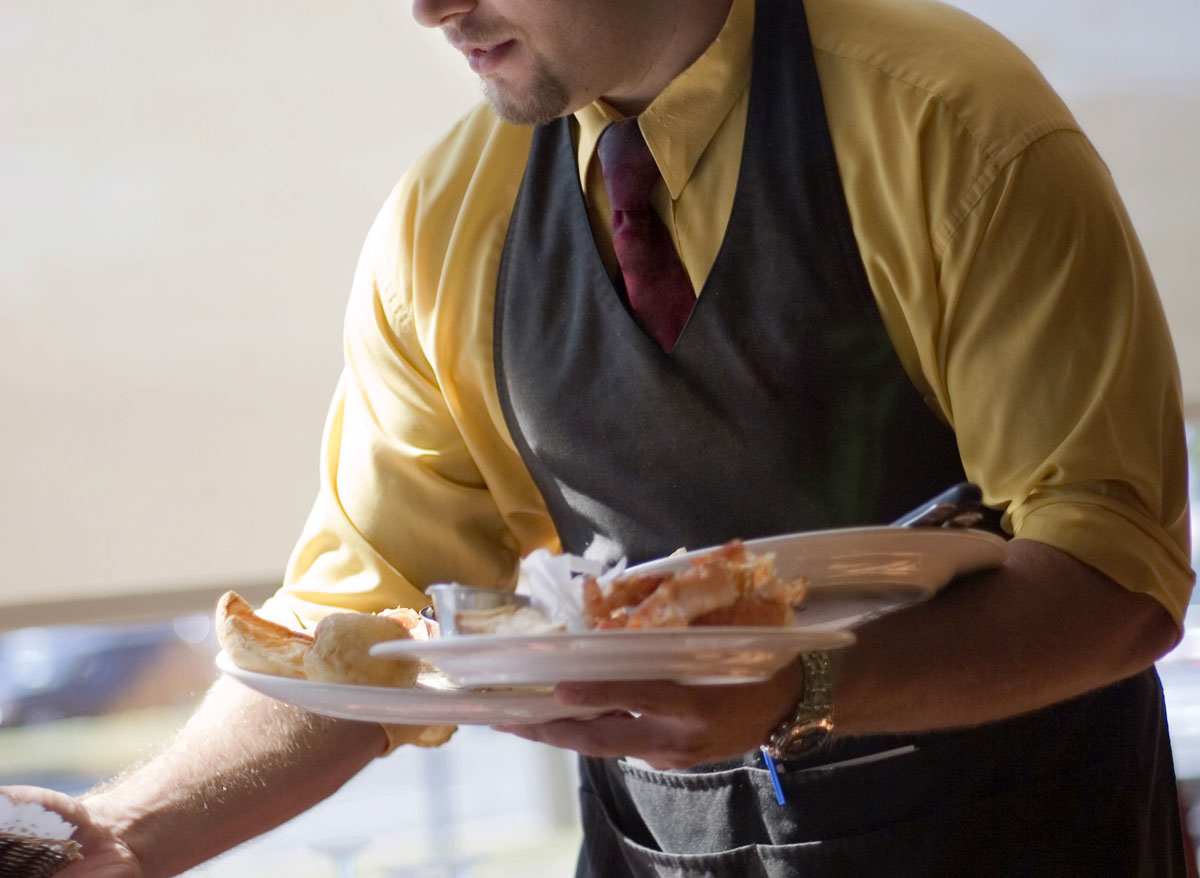
In the same way that customers don’t want to be exposed to coronavirus, neither do employees. It sounds gross, but it’s true: used tableware, silverware, and glassware will all be contaminated with patrons’ respiratory droplets and saliva, which are both proven ways for COVID-19 to spread if a person is infected. Tennesee is requiring that employees wear both masks and gloves, and you should expect to see many other states follow suit. To protect waitstaff or bussers, they will most likely have to wear gloves to take away any place settings after you finish eating. So don’t commit one of the 21 Ways You’re Annoying Your Waiter and Didn’t Know It by handing them your dirty dishes.
Box up your leftovers
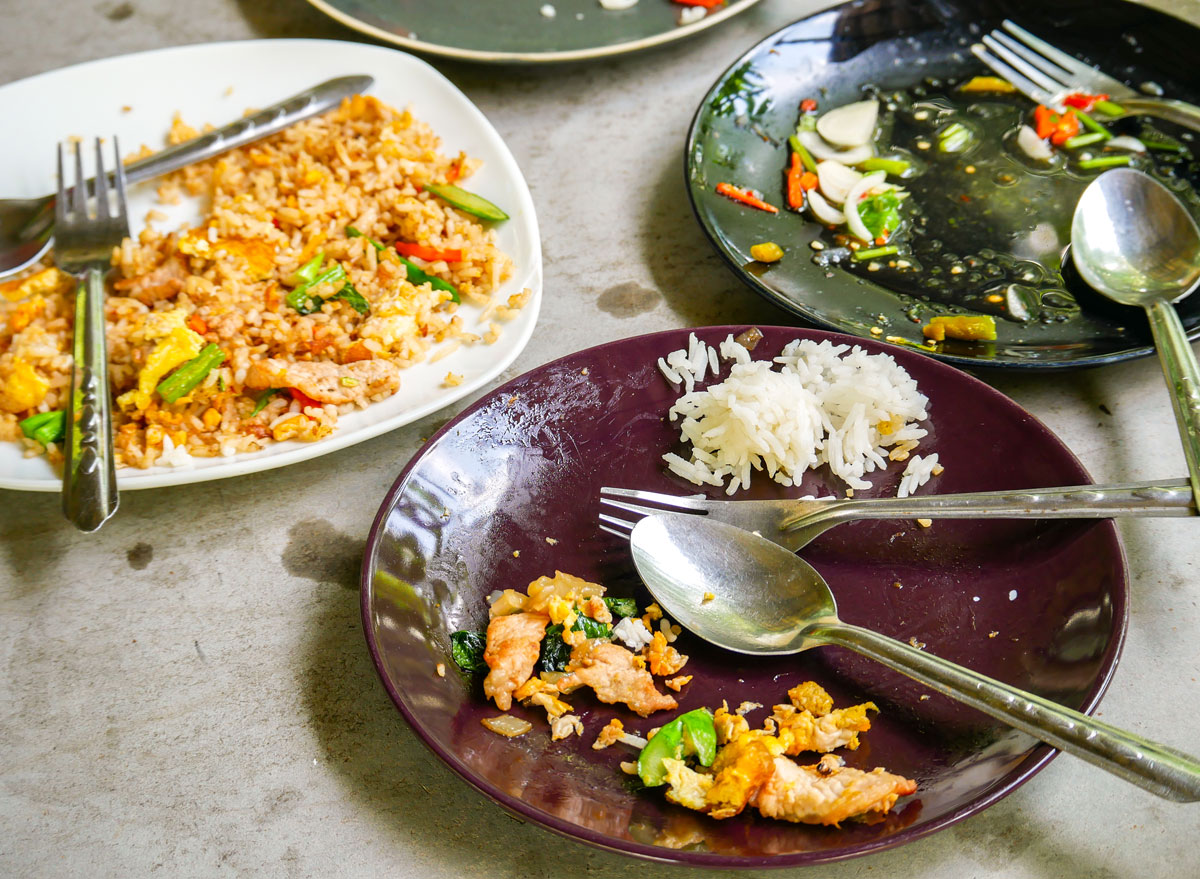
Once your food has touched your mouth, don’t expect anyone to handle it afterward. You likely don’t want anyone touching it, and waiters definitely don’t want to handle food that’s been partially consumed—and that can easily be contaminated. Although restaurants will be asking people to refrain from entering the dining room if they are feeling ill or have a fever, the CDC has said that many COVID-19 infections are asymptomatic, meaning that people with the virus may not even realize that they have it, but they can still transmit it. Although states have not explicitly passed any guidelines recommending against this practice, we predict that restaurant owners will be very cautious about food handling during this time.
STAY INFORMED: Sign up for our newsletter to get the latest coronavirus foods news delivered straight to your inbox.
Work without a mask
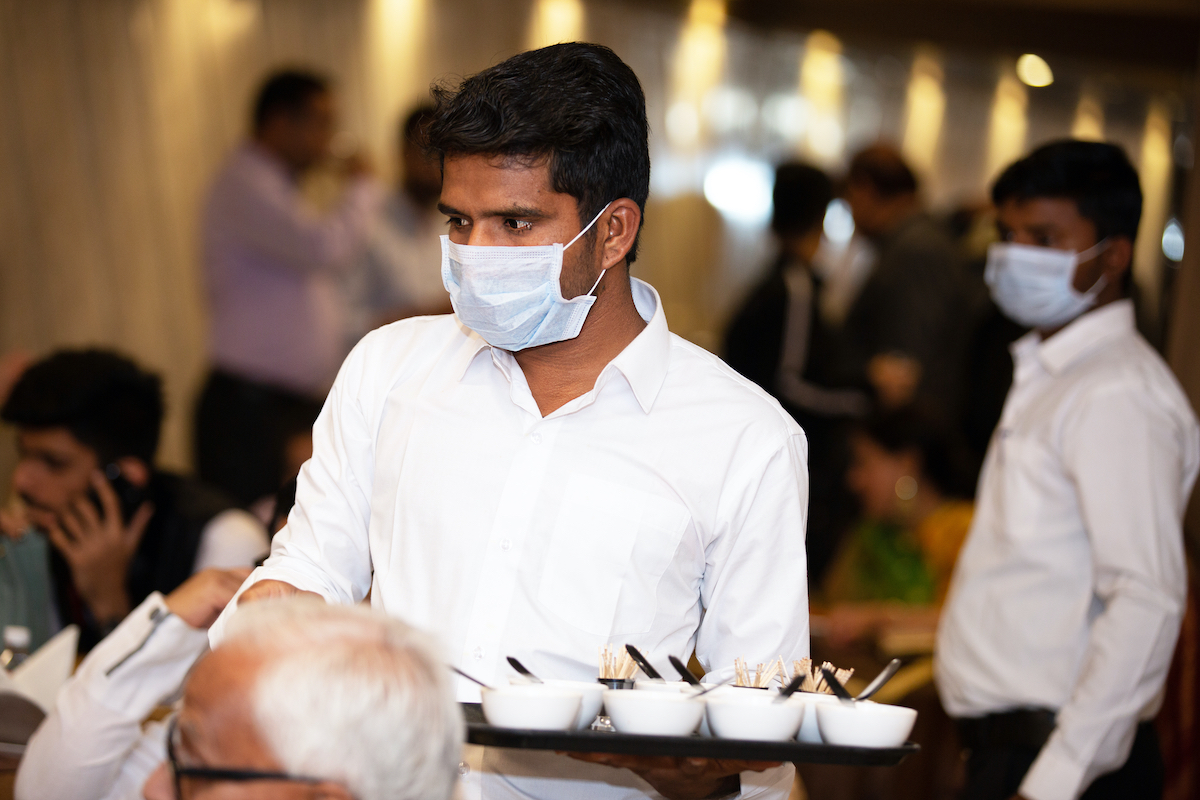
You may not be able to see it, but your waiter is smiling behind that mask! Unfortunately, your friendly server will not be able to show their pearly whites while taking your order or serving your food as states will be requiring all restaurant employees to wear a mask. After you finish a meal and put your mask back on, be informed by reading up on these 10 Mistakes You’re Making With Face Masks.
Handle your credit card payment
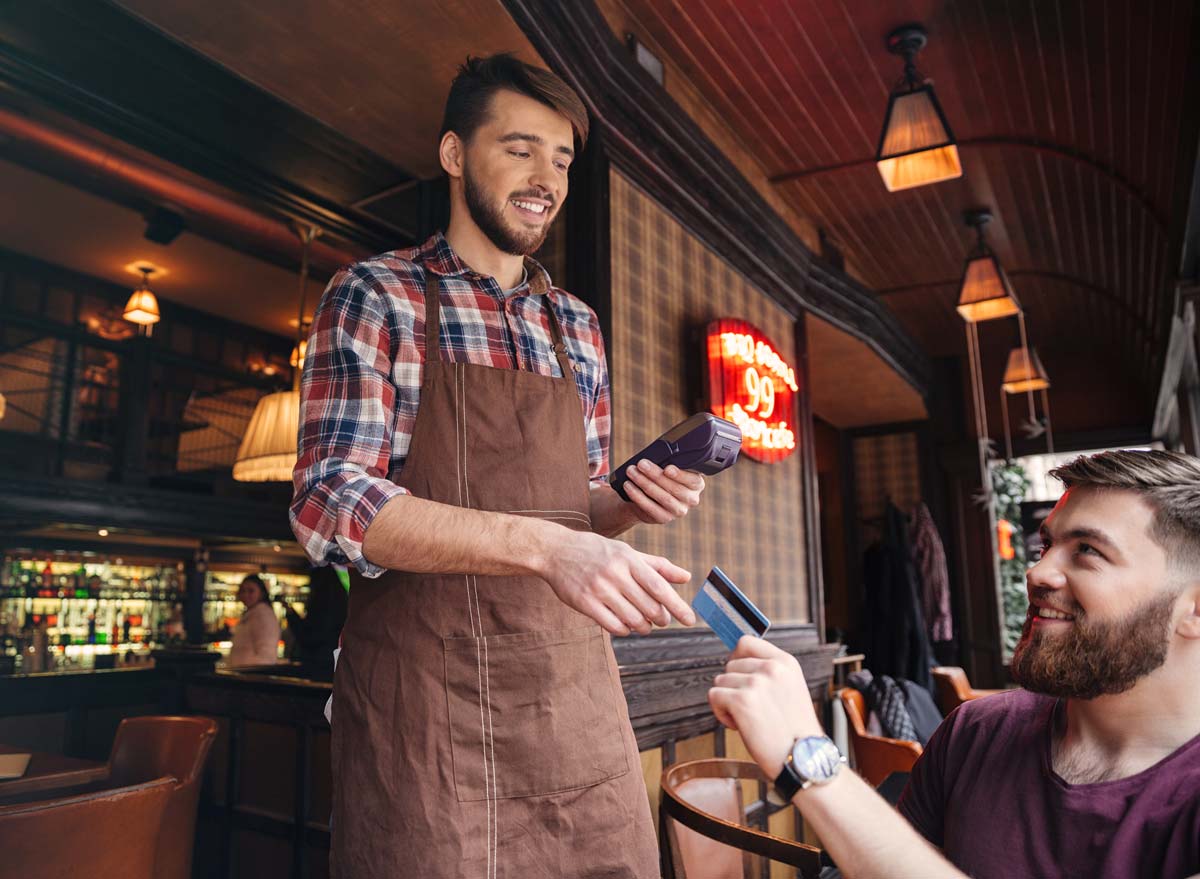
You’ll start to see more restaurants offering contactless payment moving forward, which is one of the rules we saw in both Texas and Georgia reopening guidelines. This will cut down on direct contact between waitstaff and patrons.
Push tables together for big groups
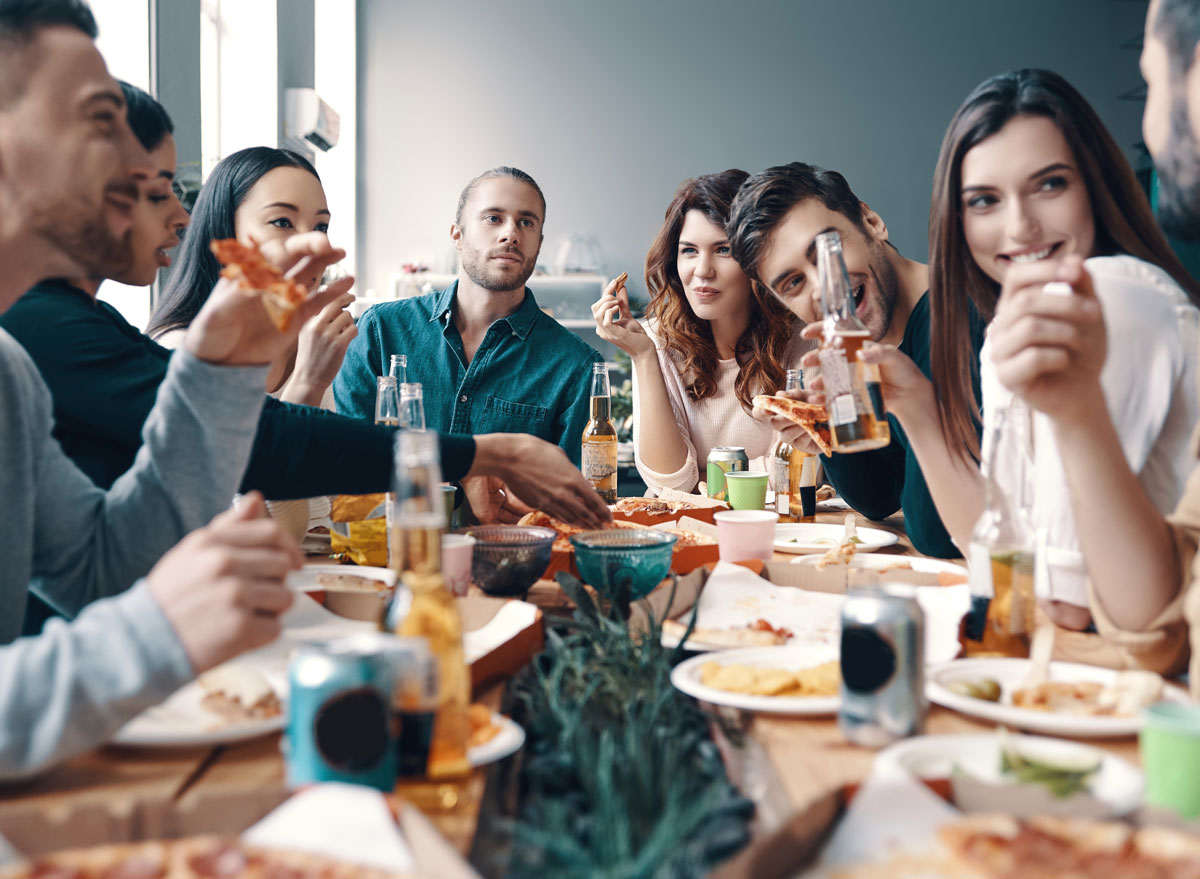
Having friends coming to meet you after you’ve been seated? Waiters are not going to be able to push a couple of tables together to accommodate you. Although dining rooms will have plenty of space—state restrictions range from capping dining room capacity at either 25 or 50 percent at the moment—many state guidelines also recommend limiting groups to six or fewer people.
Make room for more plates
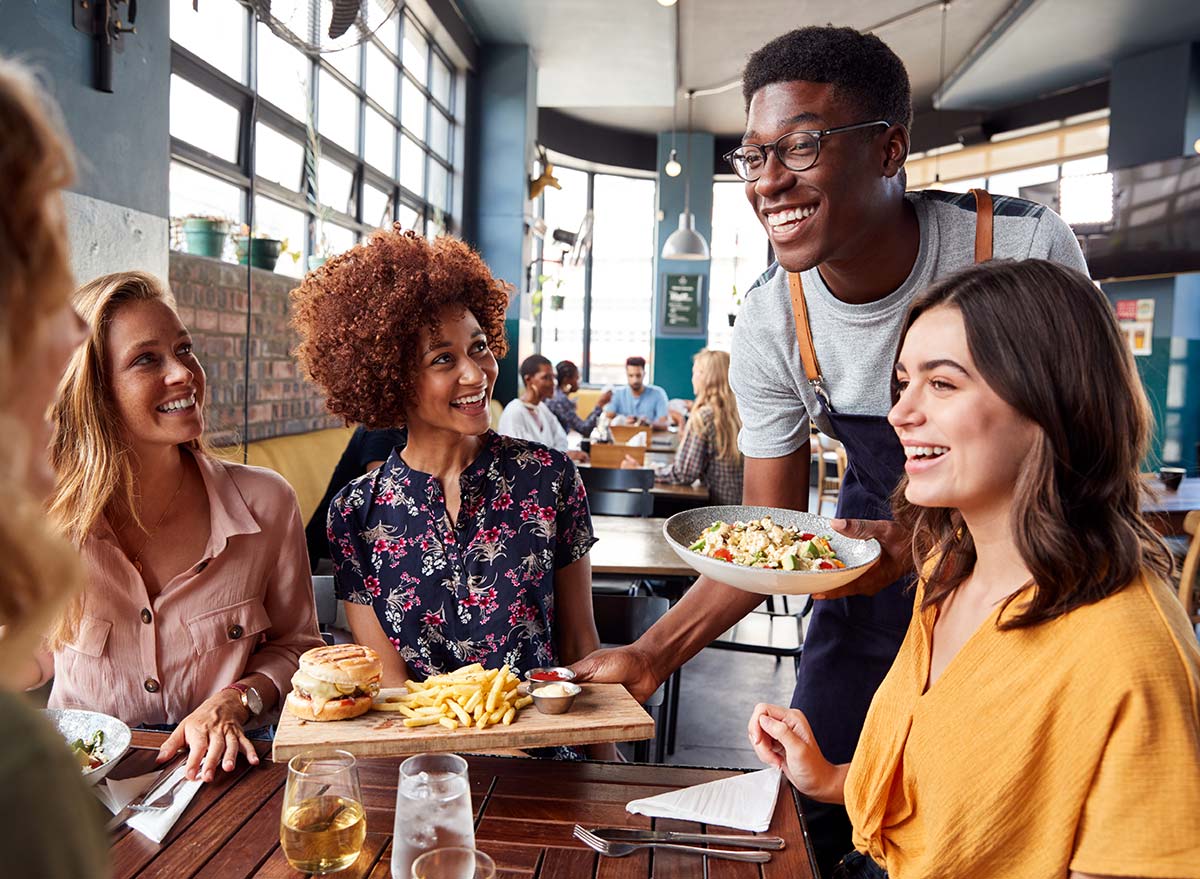
You got your round of appetizers, but you’re still picking through a few more things. No problem! But when the waiter comes by the table with your main course, don’t expect him or her to be able to move around the plates on your table to make room for the next course. Unless they’re wearing gloves (which is only required or recommended in a few states), it’s not going to be best practice for a waiter to be touching a plate that you’ll continue to eat off of.
Maybe even take your order
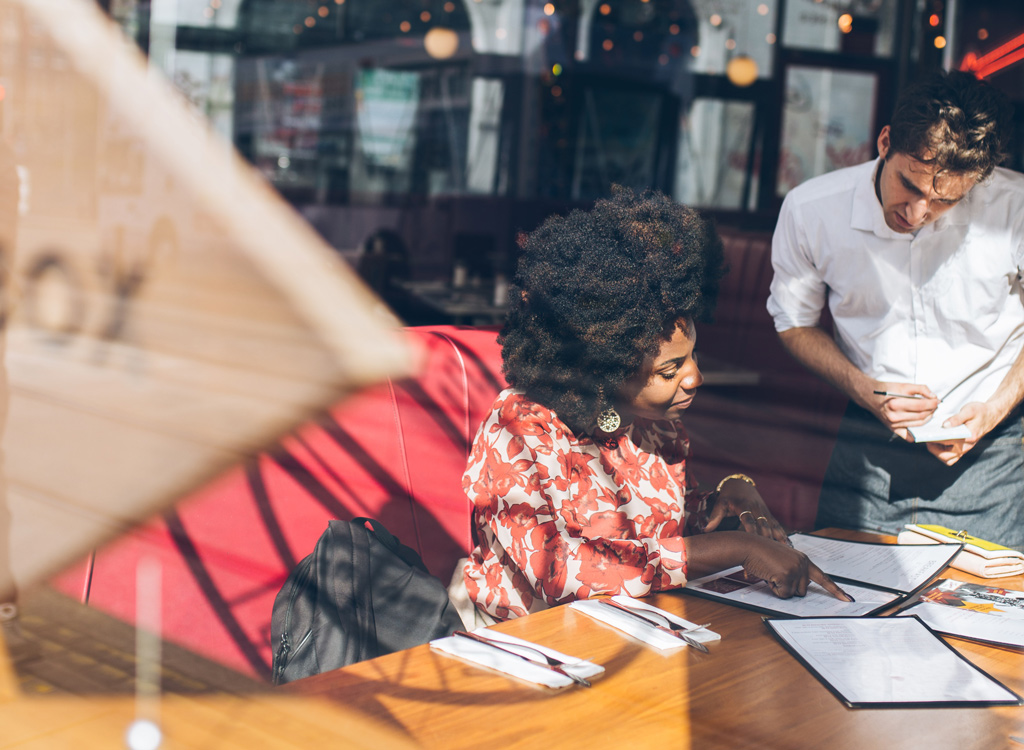
Most states have issued guidelines that require or strongly encourage providing diners with menus that are disposable or those that are sanitized between each use. While most restaurants will likely have waiters passing out paper menus, other restaurants will take a more conservative approach. One restaurant in Tennessee is going so far as to use cards with QR codes to allow diners to order without even touching a menu, according to the Daily News Journal. On top of following the proper precautions while dining out, you can also protect yourself from the virus by reading up on these 100 Things You Should Never Do During the Coronavirus Pandemic.
